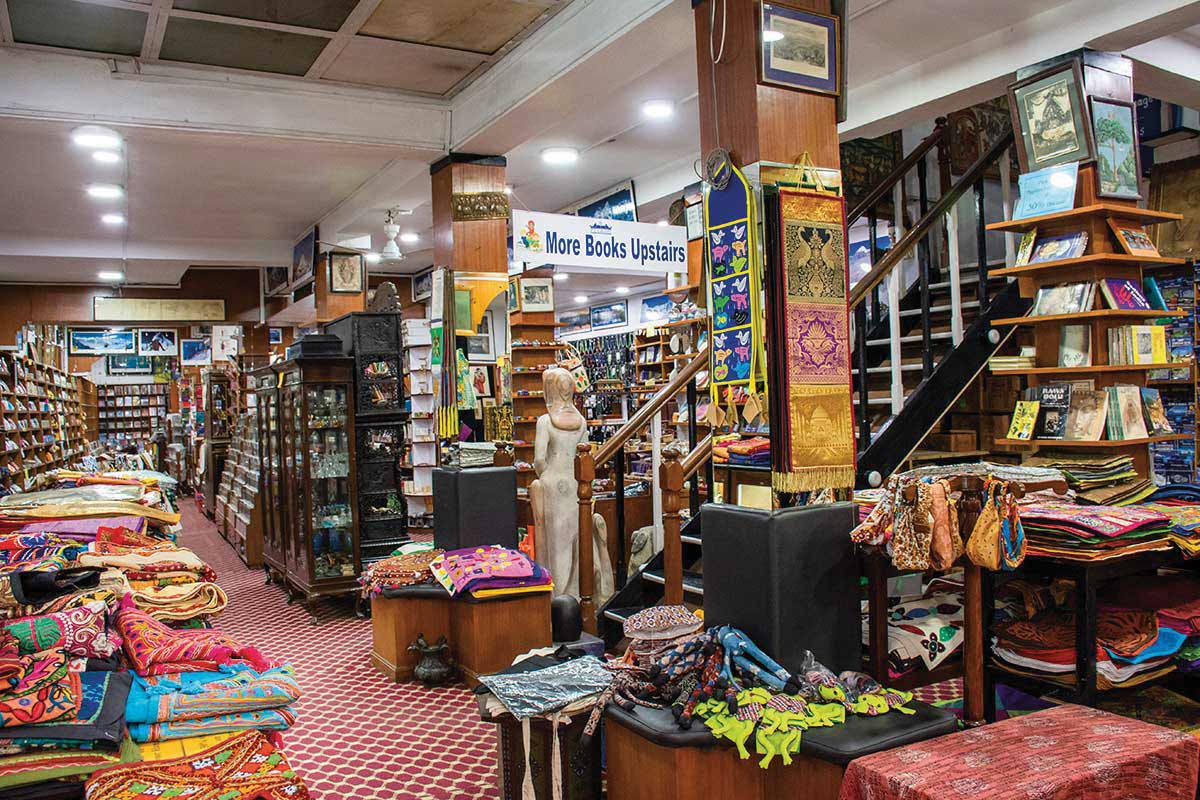What is that one gift that you value the most from your wedding, Hajurma?” I asked my grandmother.
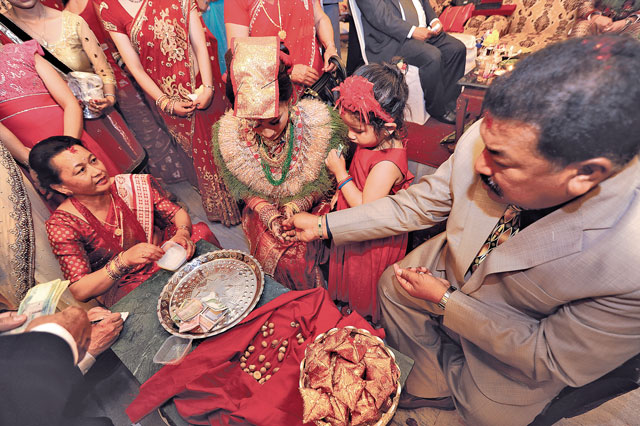
My hajurma married at the age of 18, in a pretty steady age than most of her contemporaries, but unlike the brides of today, she was carried on an ornately decorated khat (palanquin) to her husband’s house. The red tass (heavily embroidered bridal veil) that her sasa abu (in-law) had covered her face with hid her from her new family members. And, as her cart drew closer to her new home, her heart throbbed faster in nervousness of her new awaited journey.
And now she sat beside me, her eyes gleaming in excitement, “There are plenty, I can’t say which one is the most precious because they are all good memories now, and I still have it all inside my sanuuh (trunk). But, yes, the nyakha mu (an ornamented brass stand with a highly polished surface used as a mirror in special rituals) and sinah mu (a miniature brass stand resembling a pinnacle with circular design tapering towards the top) set is the dearest to me, because it is the last gift that my baa and maa gave after the kanya daan. And, every once in awhile, when I have opened my sanuuh, wonderful memories have embraced me. It’s been a good journey.”
 “But are these gifts still valuable…I mean, are they useful, aren’t they all rusted now?”
“But are these gifts still valuable…I mean, are they useful, aren’t they all rusted now?”
My hajurma started laughing, it seemed like I was still naïve for her. “Well, they are still useful, I take them out during festivals and ceremonies: like at your sister’s wedding, and at your little sister’s Ihh, Barah tayegu. They are significant, because they resonate to the symbolic wish, ‘happy conjugal life’, that my parents wanted for me.”
“I guess then, these become hand-me-downs after some time?”
“Yes, they do, they become valuable with time, I would say these are now our familial tangible inheritance connected to our families’ impalpable memories. Now, enough with your questions, ehh! Let me talk to your mother.”
Newar weddings are actually like fat meat, it takes a long time to prepare, but it is delightful in the end. Over the days, when the wedding date gets closer, families get into a quandary about what to have on the reception menu, whom to invite, what to give, and where to have the reception. Family members insist on a list of important invitees, others discuss over gifts to take to the groom’s house, while the groom’s family scuffle over what to take to the bridal house in the gwey ceremony. Gifts become an important part of a wedding, because they are what brings joy to the bridal couple, and makes them feel special. After all, marriage begins a new journey that sooner or later starts another family, continuing the basic cycle of life. These gifts are priceless memories that help in the beginning of conjugal life.
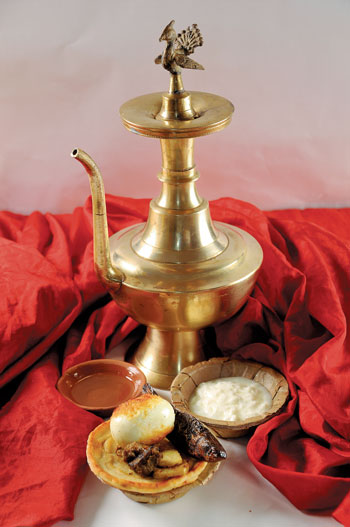 Fifty years back, the bridal family used to gift ghailas, tepos, thalis, glasses, anti, sukunda, kasauri, karuwa, foshi, dikchi, khola, etc. (utensils and ritual items made of brass, copper, or silver) to their daughter for her to take to her husband’s house. These gifts would make her self-reliant and give her the opportunity to explore her new life without any difficulties; her gifts would help her blend in with her new family. But in time, her gifts wouldn’t just be hers, but the family’s, when she would eventually become a part of the new family.
Fifty years back, the bridal family used to gift ghailas, tepos, thalis, glasses, anti, sukunda, kasauri, karuwa, foshi, dikchi, khola, etc. (utensils and ritual items made of brass, copper, or silver) to their daughter for her to take to her husband’s house. These gifts would make her self-reliant and give her the opportunity to explore her new life without any difficulties; her gifts would help her blend in with her new family. But in time, her gifts wouldn’t just be hers, but the family’s, when she would eventually become a part of the new family.
The bridal family shares the lakhamari gifted by the groom’s family, in the gwey ceremony, with their dear ones, the bride’s mama, maiju, taba, tah-ma and the other family members. Those receiving the bigger half of the lakhamari would have to gift something heavy, no less than a ghaila. “The bride’s mama has to gift a doe. My wife brought the goats with her when she married me,” says culture expert Satya Mohan Joshi, who I met in his home. I looked around to see if there were any signs of the doe’s family by now.
“The goats have died, but yes, my mamas (uncles) did give me that. I was 14 years old when I married him, and I still have those kosahs in my trunk, it’s been 78 years now. The memories are wearing off, but I still remember some parts,” says Radha Devi, Satya Mohan Joshi’s wife, who sat across us making cotton wicks.

“The joy of giving daijo (kosah/gifts) in marriage is actually not a bad idea in itself; it was solely started to ensure that the bride would not have to struggle when she would get married. Her dear ones would gift her useful belongings that would help her in her new beginning, and would help her learn things by herself,” says Joshi. “The relative who would get a full lakhamari would have to give utensils, they cannot give money, and those who would get small parts of the lakhamari would have to give ankura, karuwa, or a small baata.” Even the smallest of the bride’s needs like siyo-dhago and shringar-vastra would be fulfilled by the bride’s relatives.
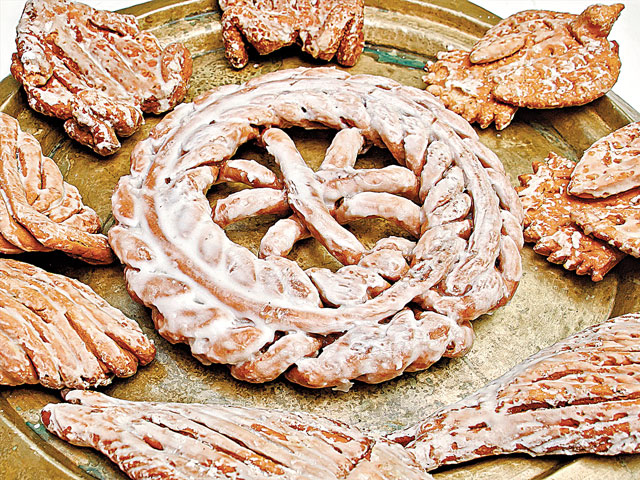
The sasa abu then gifts a tutibagi (a type of bangle for the leg) to the bride, and then the custom of depah starts. Depah is a towel in which 12 orbs of areca nuts are kept with a dabali (coin), which the bride distributes to her relatives with support of her friend, because by then, the room is thick with a fleeting sorrow of the bride leaving her family behind. The symbolic enactment of the depah means that the bride will be secure in her husband’s house.
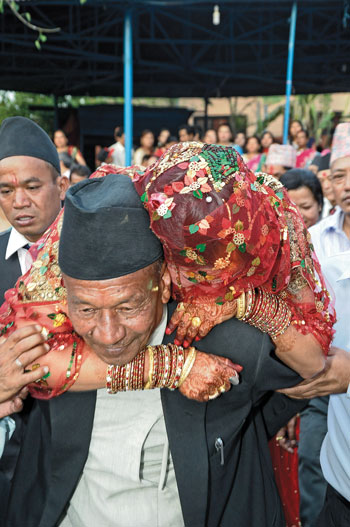 The trend of giving kosah, however, even with its significance, is fast fading from our culture. Often, family members have agreed upon not taking kosah. In most recent days, the wedding cards that have reached my house have in them a small footnote reading ‘Jinxi saamaan bandha’ (please don’t bother to bring material gifts), meaning that cash gifts would be more preferable. “Well, that may be, because things are changing now. Ghailas, tepas, and utensils are no longer that convenient; many families live abroad today, and that I guess is giving in to the change,” says Joshi.
The trend of giving kosah, however, even with its significance, is fast fading from our culture. Often, family members have agreed upon not taking kosah. In most recent days, the wedding cards that have reached my house have in them a small footnote reading ‘Jinxi saamaan bandha’ (please don’t bother to bring material gifts), meaning that cash gifts would be more preferable. “Well, that may be, because things are changing now. Ghailas, tepas, and utensils are no longer that convenient; many families live abroad today, and that I guess is giving in to the change,” says Joshi.
“Would you say this is bad, then?”
“No, change isn’t bad, and it’s not like things are not continuing as they should, because we still value our traditions. It’s just that we are looking for a more convenient way because things are no longer the way they used to be.” ---
“When I married off my daughter, I remember gifting 25 ghailas,” says Nani Tandukar, an old lady that I met near Banglamukhi, who is a grandmother to two grandsons and granddaughters. What I loved about Tandukar was that, she didn’t mind identifying herself as a grandmother. She has a beautiful smile full of satisfaction. When I ask her about her marriage, she tells me, “I was too young to understand what marriage was at the time. On my first day, early in the morning in my husband’s house, I struggled to lift a heavy ghaila filled with water up the stairs. Too clumsy, I fell down the stairs, drenching myself with the water from the ghaila. I was embarrassed, and I realized suddenly that I was not in my own home. I picked up myself up and started running towards my maita (maternal home). I cried a lot that day. I stayed in my maita for five years, but gradually I started growing, and I understood that I was married and that my place was in my husband’s house.”
What about your kosah? Do you still have them with you?
“Yes, I do. It’s all in a trunk, and some I am still using, like the brass plates, kasauri, dhawah, paneu. I love using them.”
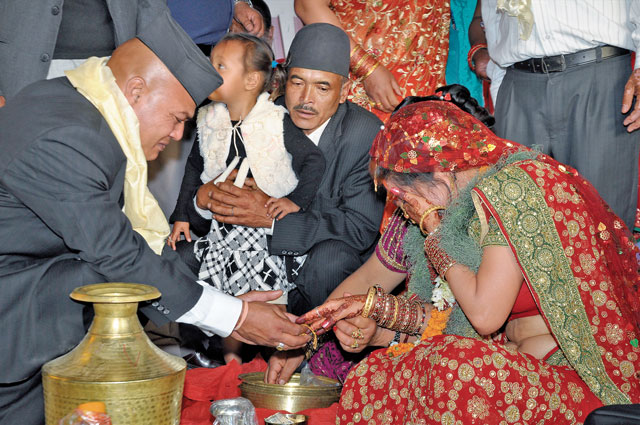
“And what was your favorite wedding gift?”
“All gifts are special, but at first because of my age I didn’t know of what use they could be, but now I value them, and I understand that it is a prestigious inheritance. Things are, however, not the same now. We no longer distribute lakhamari, and most relatives give money instead of the previously essential gift items. The new trend isn’t bad, but it was more fun then, you know. Anyway, I am just happy that I came this far in my journey. I have two sons and three daughters, and two grandsons and two granddaughters. They are my greatest gift. I am a proud grandmother.”
It would not be wrong to say that these days weddings miss the joy of planning gifts for the bridal couple. Instead, this special day, is spent in a rush. But this wedding season, what are you planning to gift?


